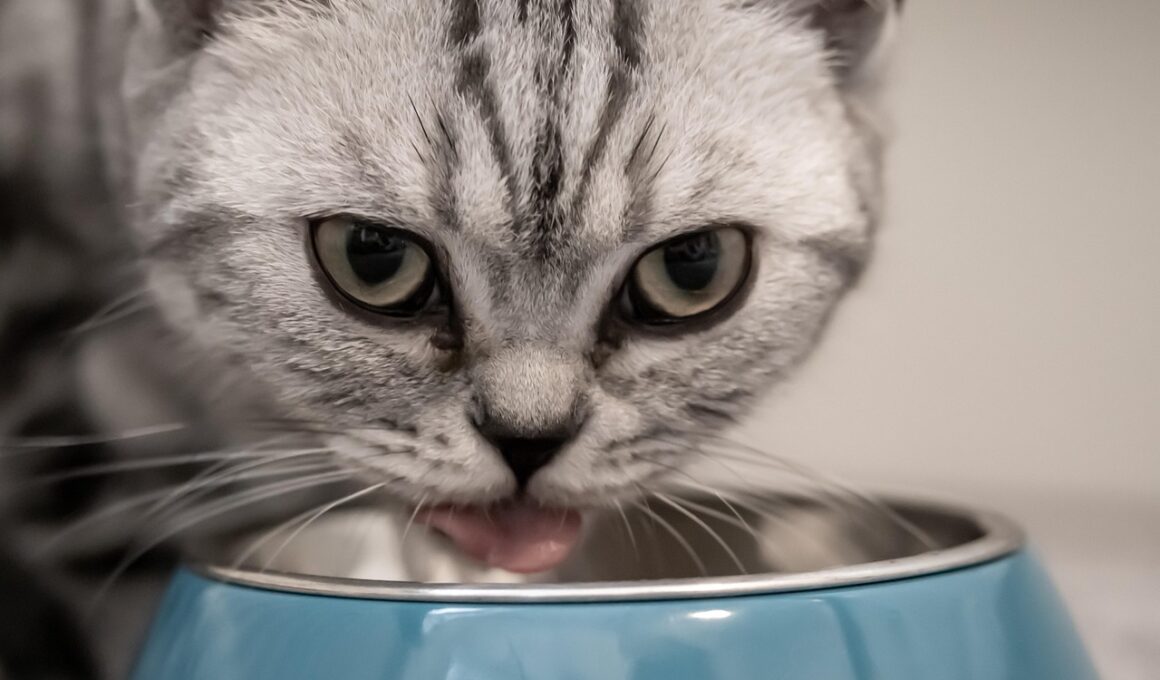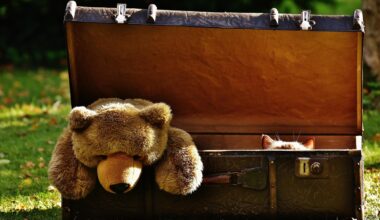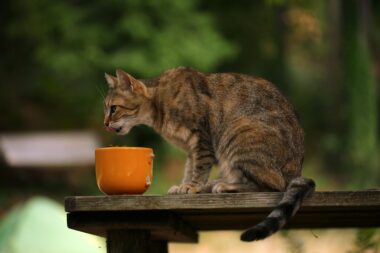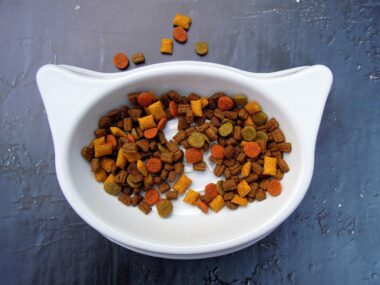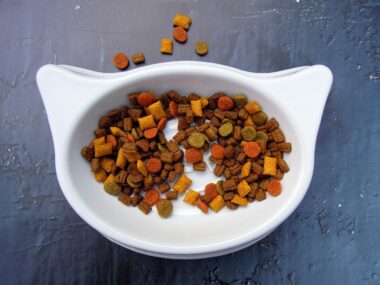Innovative Feeding Bowls That Help Reduce Whisker Stress
When choosing the ideal food bowls for your cat, it’s crucial to consider their health and comfort. Many cats experience whisker stress, a condition where their sensitive whiskers become overstimulated. A bowl design that minimizes this stress not only enhances eating but can also improve overall well-being. Here are some innovative features to look for in cat feeding bowls. Choose shallow bowls to prevent whisker fatigue, as deep bowls can cause discomfort and anxiety. Wider openings are beneficial, allowing cats to eat without their whiskers making contact with the sides. Non-slip materials help reduce mess and spills, keeping mealtime stress-free. Opt for durable, easy-to-clean materials to maintain hygiene. Considering features that elevate the bowl can also promote a more natural eating posture. Cats prefer to eat and drink closer to the ground for comfort. Invest in bowls with ergonomic designs that cater to your cat’s preferences. With the right bowls, you can create a relaxing feeding environment that encourages healthy eating habits and decreases stress for your feline friend.
Felines can be particular about their feeding experiences, which is why selecting the right food bowls is essential. The right bowl should not just be functional but also aid in your cat’s emotional well-being. When selecting feeding tools, consider options that enhance their comfort. It is a good idea to opt for ceramic or stainless-steel bowls instead of plastic, as they are less likely to harbor odors or bacteria. Design matters; bowls with shallow depths help avoid whisker contact, allowing cats to access food without discomfort. A stable base ensures bowls stay in place, preventing spills and encouraging cats to enjoy their meals without stress. Cleaning is another important aspect; bowls should be dishwasher-safe to encourage regular washing. You may find interactive feeding bowls beneficial; they stimulate your cat mentally and physically. Feeding toys that encourage play can be a wonderful addition. Remember that cats are creatures of habit, so gradually introducing new bowls can help mitigate any reluctance they might have. Monitor your cat’s behavior during feeding times to ensure they are adapting well to new tools and conditions in their meals.
Understanding Whisker Stress
Whisker stress occurs when a cat’s sensitive whiskers touch the sides of their food or water bowls. This phenomenon can lead to anxiety during meals, causing them to skip eating altogether. Research suggests that whiskers can pick up vibrations and signals from objects around them, making them essential tools for navigation. This sensitivity can become problematic when the whiskers brush against the sides of an uncomfortable bowl. Cats may exhibit signs such as pawing at their food, reluctance to eat, or attempting to eat only with the tips of their mouths. To alleviate this type of stress, it’s essential to provide wide and shallow bowls that accommodate their natural eating habits. Behavioral changes indicate a discomfort level, prompting a reassessment of their feeding environment. Consider offering multiple bowl types to see which ones your cat prefers, as individual preferences may vary. Minimizing whisker stress enhances the overall eating experience and promotes better nutrition. Understanding how whisker stress impacts feeding can lead to improved cat health and happiness.
While aesthetics matter when buying feeding bowls, function should always take precedence. Often, the most innovative designs come from a blend of practicality and style. Look for bowls that offer unique features tailored to creating a stress-free dining experience. Elevated bowls can provide a comfortable posture for many cats, which can also enhance digestion. Additionally, temperature-controlling materials that keep food warm or cool can further enrich the feeding process. It’s also crucial to consider portability; lightweight bowls are convenient for travel, while more stable options are better for home use. Including non-toxic materials is essential for safety; be cautious of harmful chemicals in various products. Utilizing double-bowl designs ensures separate food and water options, preventing cross-contamination. Allowing your cat freedom of choice in their dining setup may encourage positive behavior. Regularly assess the cleanliness of feeding tools to avoid any negative experiences associated with meals. Implementing innovative bowls can advance your cat’s comfort while ensuring nutritious intake. Always keep your cat’s personality and preferences in mind as you select the most suitable feeding tools.
Choosing the Right Materials
Materials used in cat feeding bowls significantly impact a cat’s overall experience. It’s essential to select non-porous materials such as glass, ceramic, or stainless steel. These materials are less susceptible to harboring bacteria and are easy to clean thoroughly. Avoid plastic bowls, as they may retain odors and can lead to chin acne in some cats. Ensure the bowls you choose are chipped and cracked-free to maintain hygienic standards. Moreover, consider using dishwasher-safe materials to simplify the cleaning process and maintain your cat’s bowl in the best condition. Performance and durability should always be kept in mind when you’re making your selection. Some bowls even come with antimicrobial coatings, helping prevent bacteria from accumulating over time. A well-considered choice of materials supports not only cleanliness but also enhances the eating experience that is notable comfortable compared to that of less suitable options. Always prioritize your pet’s safety and health when choosing feeding bowls, as these choices directly affect their well-being. A thoughtful approach to material selection contributes significantly to your cat’s dining preferences and overall happiness.
As we become increasingly aware of our pets’ needs, innovative feeding solutions arise. Some companies design feeding tools that deliberately minimize whisker stress. For instance, the rise of wide-rimmed bowls caters specifically to this issue, offering cats more comfortable dining experiences. Many options available today are designed to look stylish while also being extremely functional. Elevated designs can help reduce the strain on your cat’s neck, allowing them to dine in a more natural position. Alongside bowls, consider dual-use products that combine feeding bowls with additional features, such as slow feeders that prevent over-eating. Automated feeders help maintain regular meal schedules, even when owners are away. Fun designs prime for interactive play enhance mental stimulation while eating. This can be particularly useful for younger, high-energy cats who enjoy challenges. Look for options that encourage your cat to work for their meals as part of their enrichment. Mixing and matching types of bowls might create an environment that eliminates discomfort and promotes active engagement during meal times. These modern offerings can significantly transform the feeding routine and improve cats’ overall enjoyment and satisfaction.
Conclusion and Recommendations
Choosing the right feeding bowls and tools involves careful consideration of your cat’s health and preferences. By reducing whisker stress, you can help ensure that your feline companion has a pleasant dining experience. To make an informed decision, prioritize the quality of materials used in the bowls and focus on designs that minimize discomfort. Enhancing your cat’s feeding experience can lead to healthier habits, making mealtimes a pleasure rather than a chore. Look for innovative features that reduce mess and engage your cat’s natural instincts while eating. Experiment with different bowl styles and monitor how your cat interacts with them. Be open to changing feeding tools if necessary, as preferences may evolve over time. Regularly check the cleaning and condition of your cat’s feeding accessories to maintain hygiene and health. Investing in said tools is a way not only to promote your cat’s overall well-being but also to show how much you care about their happiness. Take the time and explore options that resonate with your cat’s personality to ensure a fulfilling feeding schedule.
In the end, your goal is to create a supportive environment for your furry friend that encourages healthy eating. Every cat is unique, and their preferences may differ significantly, but these general guidelines can aid you in the selection process. Combining innovation with understanding of whisker stress addresses feeding challenges effectively. A thoughtful approach pays off as you strive to enhance your pet’s nutrition and emotional well-being. Stay informed about the latest feeding solutions and incorporate recognized practices that promote the best for your cat. Take pride in being proactive in keeping your cat happy and well-fed. Remember, mealtime is an important aspect of your cat’s daily routine, and a few little adjustments can foster a more enjoyable experience. Your efforts in selecting the right bowls and feeding tools pave the way for a smoother, happier feeding time. It’s more than just food; it’s about nurturing a relationship based on understanding and considerations for their needs. Ultimately, fostering a healthy feeding environment leads to a happier, healthier cat who enjoys mealtime.
